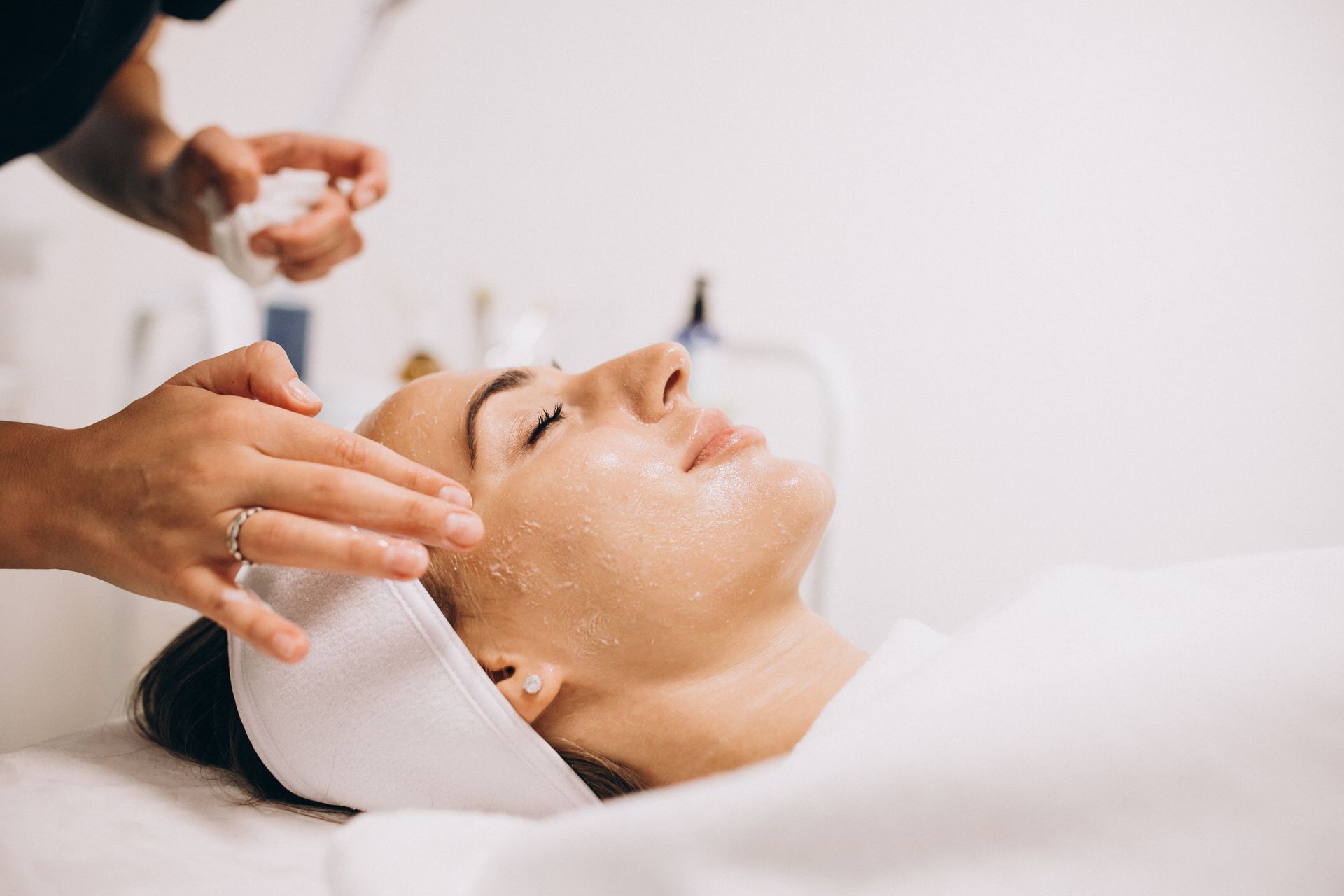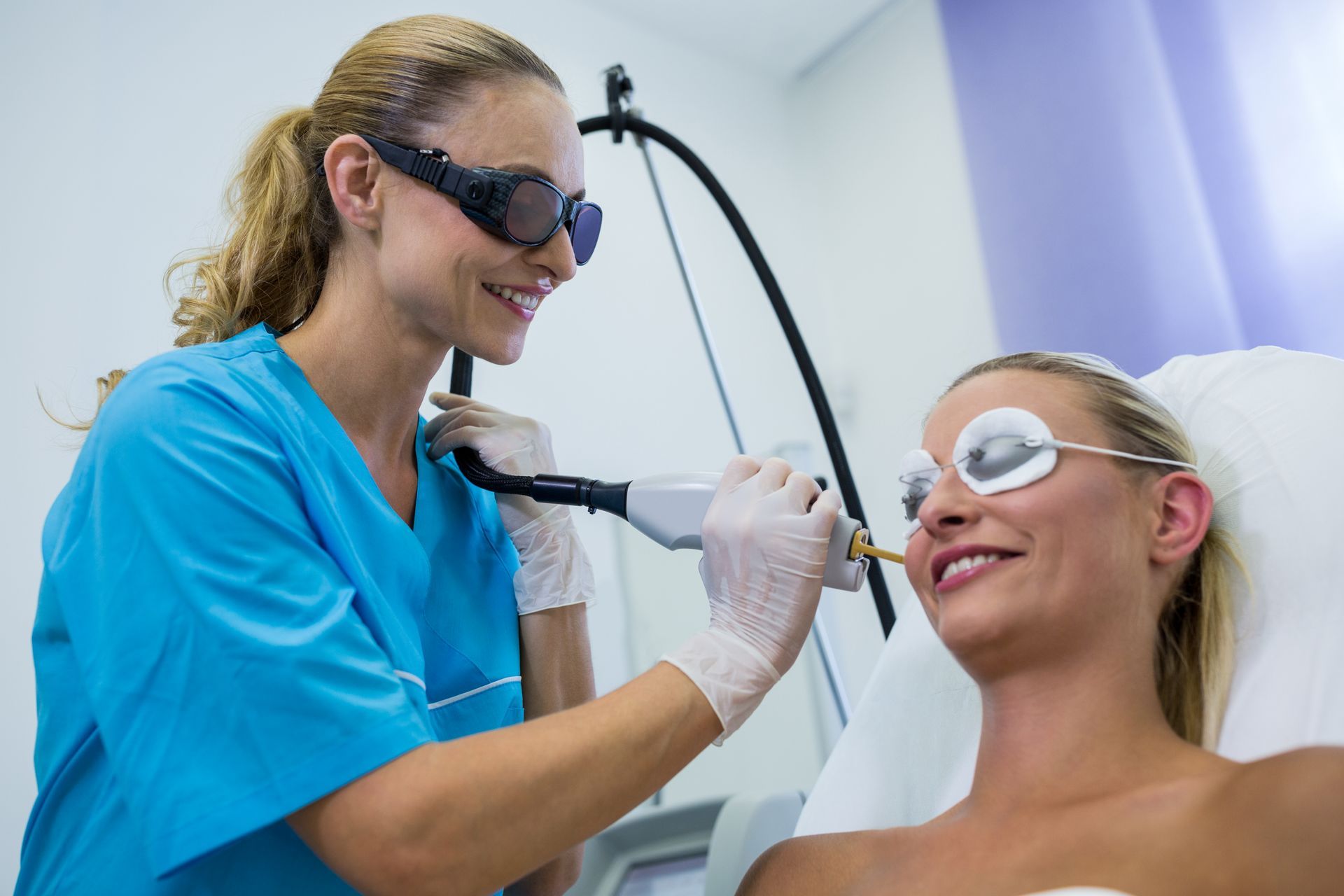Is Facial Laser Hair Removal the Solution to Unwanted Hair?
Facial laser hair removal stands as a promising solution in the quest to manage and reduce unwanted hair. It represents a contemporary cosmetic procedure that employs concentrated light beams to target and disrupt hair follicles, ultimately inhibiting hair growth. With its ability to provide long-term reduction in facial hair, this technique has gained traction as a sought-after solution for those seeking smoother, hair-free skin. However, while touted for its effectiveness, the decision to pursue facial laser hair removal requires a nuanced understanding of its benefits, potential risks, and considerations across diverse skin types and hair colors.
Delving into its mechanisms, safety considerations, and the range of outcomes is crucial in evaluating whether this procedure is the definitive answer to the challenges posed by unwanted facial hair. This exploration aims to unravel the complexities surrounding facial laser hair removal, shedding light on its efficacy, safety measures, and its role in addressing the persistent issue of unwanted facial hair.
Facial Laser Hair Removal: How Does It Work?
Facial laser hair removal is a cosmetic procedure designed to reduce or eliminate unwanted facial hair using concentrated beams of light. This non-invasive treatment targets hair follicles, hindering their ability to produce hair, leading to reduced growth over time. During the procedure, a trained technician utilizes a handheld device that emits controlled pulses of light, targeting the melanin (pigment) in the hair follicles. The melanin absorbs the light, which then converts to heat, subsequently damaging the follicle and impeding further hair growth.
Facial laser hair removal is generally effective for individuals with darker hair and lighter skin tones due to the higher contrast between hair and skin, allowing for better absorption of laser energy. However, advancements in technology have broadened its applicability to a wider range of skin tones.
Effectiveness and Benefits
Facial laser hair removal stands out for its effectiveness and offers an array of benefits, making it a sought-after choice among individuals looking to address unwanted facial hair. It is notably effective in reducing unwanted facial hair. While individual responses can vary, many individuals experience substantial and long-term reduction in hair growth after multiple sessions. However, it's important to note that complete permanent hair removal might not be guaranteed, and maintenance sessions may be necessary to sustain results.
Benefits of Choosing Facial Laser Hair Removal
- Laser treatment precisely targets hair follicles without affecting surrounding skin, ensuring accuracy and minimizing potential damage.
- Unlike temporary hair removal methods like shaving or waxing, facial laser hair removal offers longer-lasting results. It can lead to a significant reduction in hair growth, providing smoother skin for an extended period.
- Over time, facial laser hair removal can save time and effort spent on frequent hair removal methods, offering convenience in the long run.
- For individuals prone to skin irritation from traditional hair removal methods, such as shaving or waxing, laser treatment can be gentler on the skin, reducing the likelihood of irritation and ingrown hairs.
Expected Results and Duration
The
results of facial laser hair removal can vary based on multiple factors, including hair color, skin tone, and individual response to treatment. Typically, visible reduction in hair growth becomes noticeable after a few sessions. However, achieving optimal results often requires multiple sessions spaced several weeks apart.
The duration of each session depends on the treated area's size, but generally, facial treatments are relatively quick, typically lasting anywhere from a few minutes to about an hour. For long-term effectiveness, multiple sessions are usually recommended to target hair follicles in various growth stages.
Safety and Considerations
Facial laser hair removal is generally considered safe when performed by trained professionals. However, there are essential safety precautions, considerations for different skin types, and potential risks associated with the procedure that individuals should be aware of.
Professional Expertise:
It's crucial to undergo facial laser hair removal at a reputable clinic with
trained and certified technicians proficient in handling laser equipment.
Skin Sensitivity Test: Prior to treatment, a patch test is often conducted on a small area to assess
skin sensitivity and ensure there are no adverse reactions to the laser.
Eye Protection: Both the patient and the technician should wear protective eyewear to shield their eyes from the laser's intense light.
Preparation and Aftercare:
Proper
pre-treatment guidelines, such as avoiding sun exposure and certain skincare products, and post-treatment care instructions, like using sunscreen and moisturizing, are essential for optimal results and minimizing side effects.
Suitability for Different Skin Types:
Facial laser hair removal can be effective across various skin tones. However, individuals with
darker skin tones may require specific types of lasers, such as Nd:YAG or Diode, to minimize the risk of pigment changes or
burns. Consultation with a qualified professional can help determine the most suitable laser based on skin type.
Potential Risks and Side Effects
While facial laser hair removal is generally safe, potential risks and side effects may include:
- Temporary redness, swelling, or mild discomfort in the treated area immediately after the procedure is common and usually subsides within a few hours to a couple of days.
- Individuals with darker skin tones might be at risk of temporary pigment changes, either lightening or darkening of the skin in the treated area, which typically resolve over time.
- In rare cases, blistering, scarring, or infections might occur. Adhering to aftercare instructions and selecting a qualified practitioner can minimize these risks.
Preparation and Procedure
Facial laser hair removal requires careful preparation, involves specific procedures, and necessitates post-treatment care to ensure optimal results and minimal side effects.
1. Preparing for Facial Laser Hair Removal
Before embarking on facial laser hair removal, a preliminary consultation with a licensed practitioner holds paramount importance. This initial meeting encompasses a comprehensive discussion of medical history, meticulous assessment of skin type, and an elucidation of the procedure, setting realistic expectations for the individual. In preparation for the treatment, it's advised to steer clear of direct sun exposure or tanning beds, as
tanned skin might heighten susceptibility to adverse effects during the procedure. Additionally, shaving the treatment area ahead of the scheduled session is recommended. This step aids the laser in targeting hair follicles beneath the skin's surface rather than on the skin's surface, optimizing the efficacy of the procedure. These preparatory measures, coupled with the preliminary consultation, form a foundational framework for a more informed and successful facial laser hair removal experience.
2. What to Expect During the Procedure
During facial laser hair removal, the use of protective eyewear is essential for both the patient and the technician to safeguard their eyes from the laser's intense light. To alleviate any discomfort, the practitioner may employ cooling gels or devices before or after the laser treatment. Throughout the procedure, individuals might experience sensations such as slight tingling or a stinging feeling as the laser focuses on the hair follicles. However, the
pain levels are typically minimal and easily manageable, ensuring a tolerable experience for most individuals undergoing the treatment.
3. Post-Treatment Care and Recovery
After undergoing facial laser hair removal, adopting certain
post-treatment practices is crucial for optimal recovery and results. Avoiding sun exposure becomes imperative, necessitating regular sunscreen application to shield the treated area. Maintaining moisture in the treated region aids in the recovery process, minimizing potential irritation. It's advisable to refrain from activities that might provoke sweating or irritate the skin for a few days following the treatment. Additionally, understanding the need for
multiple sessions, spaced several weeks apart, is vital for achieving effective results. Adhering to the recommended schedule of follow-up sessions plays a pivotal role in ensuring the desired and lasting outcomes of the facial laser hair removal procedure.
Comparisons and Alternatives
When exploring facial hair removal, understanding the varied methods becomes crucial in making an informed choice. Facial laser hair removal stands out for its precision and long-term effectiveness. Unlike shaving, which offers short-term results, lasers target hair follicles below the skin's surface, providing smoother skin for an extended period. Waxing, another common method, removes hair from the root, offering longer-lasting results than shaving but often comes with discomfort and potential skin irritation. Depilatory creams dissolve hair at the skin's surface, providing temporary results with the risk of skin sensitivity. In comparison, facial laser hair removal offers precision and longer-lasting outcomes, making it a favored choice for many seeking a more sustainable solution.
Alternative Options for Facial Hair Removal
While facial laser hair removal presents promising advantages, alternative options exist, each with its unique features. Electrolysis, for instance, involves the destruction of hair follicles through electric currents, delivering effective results but demanding more time, especially for larger areas. Threading, a method using twisted cotton threads to remove hair, offers precision but might not be suitable for individuals with sensitive skin. Plucking or tweezing, while effective for small areas, can be time-consuming and may cause skin irritation and ingrown hairs. Each alternative method brings its own set of advantages and drawbacks, catering to diverse preferences and tolerances.
Pros and Cons of Different Hair Removal Techniques
Considering the pros and cons of various hair removal techniques becomes pivotal when making a choice. Facial laser hair removal boasts longer-lasting results and precision, with minimal skin irritation for most individuals. However, the initial cost might be higher compared to some methods, and temporary side effects like redness or swelling might occur. Other methods like electrolysis or threading provide their own benefits, such as effectiveness and precision, but may have drawbacks like time consumption or discomfort. Evaluating these aspects helps individuals align their preferences, skin sensitivity, and desired outcomes, guiding them toward the most suitable hair removal method for their needs.
Addressing Common Concerns
Facial laser hair removal is an effective method, but common concerns like pain levels during treatment, cost considerations, and the frequency of sessions for optimal results often arise.
Pain Level and Comfort during Treatment:
Pain levels during facial laser hair removal are generally tolerable for most individuals. Sensations might include a slight tingling or stinging sensation as the laser targets hair follicles. However, discomfort varies among individuals based on their pain tolerance. To mitigate any potential discomfort, practitioners may use cooling gels or devices during or after the procedure.
Cost Considerations and Affordability:
The
cost of facial laser hair removal can vary based on several factors, including the treated area's size, the number of sessions required, and the clinic's location. While initial costs might seem higher compared to some traditional hair removal methods, like shaving or waxing, over time, the long-term effectiveness of laser treatment often makes it a cost-efficient option. Consulting with a clinic to understand their pricing structure and possible package deals can provide a clearer idea of affordability.
Frequency of Sessions for Effective Results:
Achieving optimal results with facial laser hair removal typically requires multiple sessions spaced several weeks apart. Hair grows in different cycles, and the treatment targets hair follicles during the active growth phase. Therefore, multiple sessions are necessary to address hairs in various growth stages. The number of sessions varies depending on individual factors, such as hair color, skin type, and the treated area's size.
Consultation and Decision-Making
Before opting for facial laser hair removal, a consultation with professionals is crucial for making an informed decision. When consulting for facial laser hair removal, asking about the practitioner's expertise, treatment plan details, and suitability based on skin and hair factors guides informed decision-making. These inquiries empower individuals to align their expectations with the practitioner's skillset.
Before opting for facial laser hair removal, several key considerations should guide your decision-making process. Firstly, assessing skin sensitivity and medical history is essential; individuals with certain skin conditions or medical backgrounds might not be suitable candidates. Engaging in a detailed discussion about your medical history with the practitioner is crucial to determine candidacy. Secondly, managing expectations is crucial—understand that the goal is often hair reduction rather than complete removal, ensuring realistic outcomes. Lastly, timing treatments to avoid direct sun exposure or activities that could disrupt post-treatment care is advisable, optimizing the procedure's effectiveness and recovery process. These factors collectively inform a well-rounded decision about pursuing facial laser hair removal.
After gathering information and considering the factors discussed during consultations, individuals can make an informed decision regarding facial laser hair removal. It involves weighing the benefits, understanding the limitations, and aligning personal preferences with treatment goals. Opting for a reputable clinic with experienced professionals and a thorough understanding of the procedure enhances confidence in the decision-making process.
Conclusion
Facial laser hair removal offers a lasting solution for unwanted facial hair. Deciding whether it's right for you involves considering factors like skin suitability, treatment expectations, and commitment to multiple sessions. It's essential to weigh the procedure's pros and cons and consult professionals to align expectations realistically. Making an informed decision hinges on understanding the procedure's nuances and ensuring it aligns with your lifestyle and desired outcomes.
BOOK YOUR FREE SESSION










